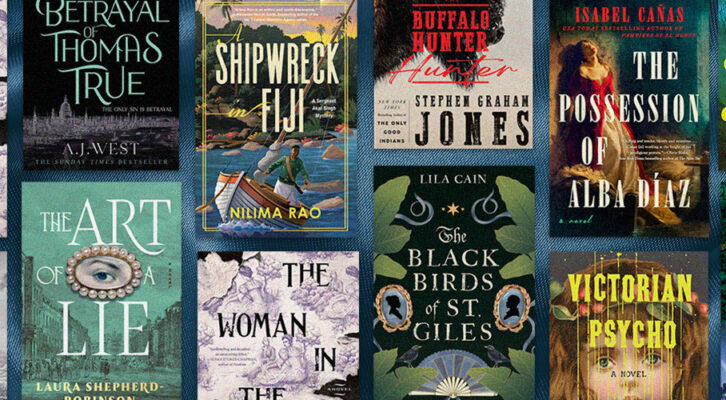Over the past 20 years, ruthless cutbacks have devastated once robust investigative teams at newspapers nationwide. Joshua Sharpe’s new book reminds us why this kind of reporting is so vital. Building on pieces he wrote for the Atlanta Journal-Constitution, Sharpe’s The Man No One Believed: The Untold Story of the Georgia Church Murders recounts the four-decade quest to catch the killer of a Black couple in southern Georgia.
On March 11, 1985, Harold Swain, 66, and his wife, Thelma Swain, 63, were shot to death at Rising Daughter Baptist Church, which was “founded by people whose families had been enslaved for generations,” Sharpe writes. Witnesses agreed that the killer was white, but it was not until 2000 that police arrested a local man named Dennis Perry. He was convicted of the murders in 2003 and sentenced to life in prison.
In 2019, the Georgia Innocence Project, which investigates questionable convictions, approached Sharpe, then a reporter with the Journal Constitution, and suggested he take a closer look at the case, which was marred by lost evidence and other investigative errors. His reporting changed everything, not only proving that Perry was innocent but uncovering details that helped lead to the arrest of Erik Sparre, an apparent white supremacist who was convicted of the murders in 2024.
In a recent video interview, Sharpe, who grew up not far from Rising Daughter, discussed what went wrong with the initial police investigation, why some officers sought to downplay race as a potential motive and how, as he writes, his youth “made me more open to potential innocence cases.”
Why did the Georgia Innocence Project think you’d be the right reporter for this case?
Well, I’m not sure exactly, but I do remember them saying they had read a story that I did for Atlanta magazine, an investigative narrative piece looking into the possibility of industrial pollution in my hometown contributing to childhood cancers, and maybe also to my mother’s cancer.
There’s another part of your family history that shapes how you see innocence investigations. Tell me about that.
I would say the reason I’m a journalist is my grandma. She wasn’t a journalist, but she raised me on her stories. Every day after school, I would sit on the couch and ask her to tell stories. One was about her brother Huey, who went to prison. A few decades before I was born, he was arrested for murder. In the family, the belief was very strong that he didn’t do it. He said he didn’t do it. I don’t know what the truth is. I’ve tried to find the records from that case, but it’s been a long time. I do know that whether he was innocent or not, the belief that he was just tormented my grandmother and other people in the family.
At least one of the police officers who first investigated the case told the public that race wasn’t a factor in the murder. Why did they think this? As you write, this is an African American church and the killer, everyone agreed, was a white man.
I think part of it was, at that time especially, race was something that wasn’t supposed to be talked about in polite society. This was prosperous, and obviously many people didn’t adhere to it. But many people did.
Also, the lead detective—who was white, and who I would say was a rather antiracist guy—didn’t understand all of the history. He was taught, as I was growing up here, a lot of lies about the history of the South.
There was also the fact that the first person shot was Harold Swain, and he was beloved in the community. There were lots of white people who considered Harold Swain a friend. The detective just had a hard time imagining how even a racist could hate Harold Swain.
There were many problems with the police investigation. Evidence was lost, confessions were overlooked. You go into this in a lot of detail, but is there a way to boil it down? What happened here?
One big thing that happened here is that the initial investigation started in 1985. If you were someone whose job it was to investigate a murder, you had so few actual tools to help you figure out who the real killer was. There were a lot of methods that police adopted. Sometimes those methods didn’t make good sense. 1985 was the first year that a DNA test was conducted anywhere. Most detectives up until the early ‘90s would have never heard of DNA testing. They had things like hair analysis and carpet fiber analysis, a lot of things that turn out to be bogus.
And as far as evidence going missing, that ends up happening because of a change in detectives and a change in who’s in charge of the materials. And somewhere along the way, somebody drops the ball with a few big pieces of evidence.
You’re not able to tie the missing evidence to what you call “the local good old boy network,” but it makes you wonder.
People have certainly expressed wonder to me about the missing evidence. And I wonder about it too, but I don’t have any theories about fraud or anything like that.
It seems like cold cases became a big thing in the 1990s. This case was featured on Unsolved Mysteries, a network TV show that millions of people watched. You make a good point about this, how there’s a link between the declining rate of violent crime and the uptick in attention paid to these unsolved cases.
The short answer is technology. Pretty much everybody started looking into cold cases—police across the United States—because we now had DNA testing. Another thing was that the cascading violence from the crack epidemic had finally started to slow, and a lot of police departments looked at their books and realized that they had a lot of cases still lingering.
As you started looking into this case, people warned you that it could be dangerous. You were chased out of your apartment one day when it seemed that someone related to a suspect had been murdered. What was this like for you?
Well, it was weird, I’ll tell you that. But you know, I also tried to be logical about it.
By meeting people in public places, sending them letters, instead of just knocking on their doors.
The point of the letters is that I don’t just show up there and start talking—I’m letting you know where I’m coming from. I always kept in the back of my mind that if you were angry at someone for asking you about a murder that happened a long time ago—because maybe you were involved, or you’re worried that someone thinks you were involved—it would be the dumbest thing you could do to kill the reporter who came to ask you about it. They would know exactly who did it.
But at the same time, there’s a whole lot of guns in south Georgia, as elsewhere in the country. I know that things can get heavy in a heartbeat. So I was watchful, kept my head on a swivel.
And as you mention in the book, you’re not naturally a confrontational personality, right?
No, Lord no. The phrase that sticks with me, which I heard many times growing up, is you catch more flies with honey than with vinegar. I’m a honey man. I’m not going to come screaming at you. I just want every person—no matter where they’re coming from, no matter what I’ve been told to suspect about them—to understand that I know they are a person, ultimately just like me. I’m not trying to go against you. I’m here because I want to hear from you.
Given the state of the newspaper industry, are stories like the ones you wrote for the AJC still getting assigned and published in, say, 2030?
Five years from now, we’re going to be even deeper into the decimation of the American newspaper and TV news industries. It’s certainly the case that there is much less chance that a newspaper would cover these types of stories going forward. But I will say that there’s great opportunity in different kinds of journalism. Podcasts—but, as somebody who’s making a podcast that revolves around wrongful convictions, it’s really difficult to sell one right now.
Because everybody has one?
That’s what they say. And they say, well, how is this different?
But in terms of the investigations, one thing I want to stress is that as much as I have many fears about AI, it can be helpful in this. Right now, with the program I’m using, you can put the police file in there, the court transcript. And then these AI tools can give us tremendous summarizations quickly. You’ve got to check them, but this will help in vetting. I have a lot of hope for that, at least.
______________________________


















